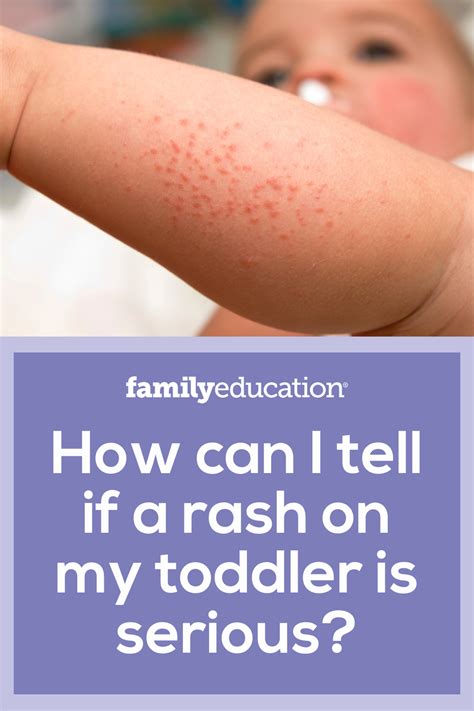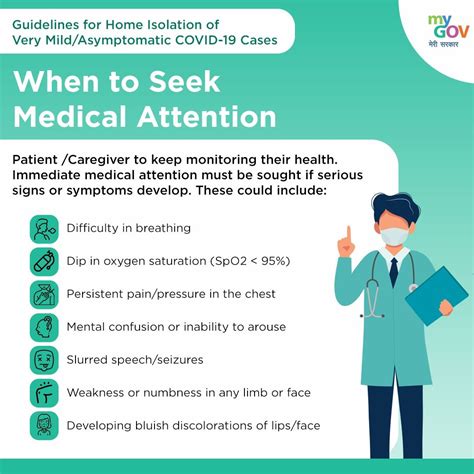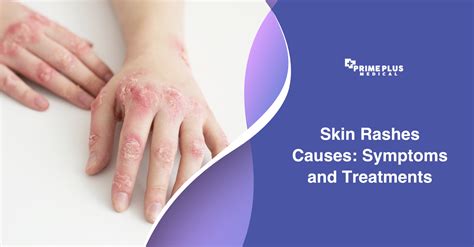Intro
As a parent, seeing your toddler break out in a rash can be a worrying and overwhelming experience. It's natural to feel concerned about the cause and how to treat it. Rashes in toddlers are relatively common and can be caused by a variety of factors, including allergies, infections, and environmental irritants. Understanding the different types of rashes, their symptoms, and treatment options can help you navigate this situation with confidence.
Rashes in toddlers can manifest in different ways, depending on the underlying cause. Some common symptoms include redness, itching, and inflammation of the skin. In some cases, the rash may be accompanied by other symptoms such as fever, vomiting, or diarrhea. It's essential to monitor your child's symptoms closely and seek medical attention if you notice any signs of severe illness or if the rash persists or worsens over time.
The importance of prompt and proper treatment cannot be overstated. Untreated rashes can lead to complications, such as skin infections or scarring. Moreover, some rashes can be a sign of an underlying condition that requires medical attention. By understanding the different types of rashes and their treatment options, you can provide your child with the best possible care and help them recover quickly.
Rash On Toddler Symptoms

When it comes to identifying the symptoms of a rash on a toddler, it's crucial to look for signs of skin irritation, such as redness, swelling, and itching. The rash may appear as small, raised bumps or as a large, flat area of inflamed skin. In some cases, the rash may be accompanied by other symptoms such as fever, vomiting, or diarrhea. It's essential to monitor your child's symptoms closely and seek medical attention if you notice any signs of severe illness or if the rash persists or worsens over time.
Some common symptoms of rashes in toddlers include:
- Redness and inflammation of the skin
- Itching or burning sensation
- Small, raised bumps or blisters
- Flat, scaly patches of skin
- Fever or chills
- Vomiting or diarrhea
Types Of Rashes
There are several types of rashes that can affect toddlers, each with its unique set of symptoms and treatment options. Some common types of rashes include: * Eczema: a chronic skin condition characterized by dry, itchy skin * Contact dermatitis: a skin reaction caused by exposure to an allergen or irritant * Impetigo: a bacterial infection that causes red, itchy sores * Ringworm: a fungal infection that causes circular, itchy patches of skin * Viral rashes: caused by viruses such as measles, chickenpox, or roseolaTreatment Options

The treatment for a rash on a toddler depends on the underlying cause. In some cases, the rash may resolve on its own with minimal treatment, while in other cases, medical attention may be necessary. Here are some common treatment options for rashes in toddlers:
- Topical creams or ointments: to reduce inflammation and itching
- Oral medications: to treat underlying infections or allergies
- Cool compresses: to reduce itching and inflammation
- Bathing: to keep the skin clean and reduce the risk of infection
- Avoiding irritants: to prevent further skin irritation
Home Remedies
In addition to medical treatment, there are several home remedies that can help soothe and calm a rash on a toddler. Some common home remedies include: * Oatmeal baths: to reduce itching and inflammation * Coconut oil: to moisturize and soothe the skin * Aloe vera: to reduce inflammation and promote healing * Cold compresses: to reduce itching and inflammation * Avoiding scratchy fabrics: to prevent further skin irritationWhen To Seek Medical Attention

While many rashes in toddlers can be treated at home, there are certain situations where medical attention is necessary. If you notice any of the following symptoms, seek medical attention immediately:
- Severe itching or burning sensation
- Difficulty breathing or swallowing
- Fever over 102°F
- Vomiting or diarrhea
- Signs of infection, such as pus or discharge
- Rash that persists or worsens over time
Prevention
Preventing rashes in toddlers requires a combination of good hygiene, avoiding irritants, and maintaining a healthy lifestyle. Here are some tips to help prevent rashes in toddlers: * Keep the skin clean and dry * Avoid exposure to allergens and irritants * Use gentle, fragrance-free soaps and lotions * Dress your child in breathable, natural fibers * Keep your child's nails trimmed to prevent scratchingCommon Causes Of Rashes

Rashes in toddlers can be caused by a variety of factors, including:
- Allergies: to food, skin care products, or environmental allergens
- Infections: bacterial, viral, or fungal
- Environmental irritants: such as soap, detergent, or fabric softener
- Genetic conditions: such as eczema or psoriasis
- Nutritional deficiencies: such as vitamin or mineral deficiencies
Diagnosing Rashes
Diagnosing a rash on a toddler requires a combination of physical examination, medical history, and laboratory tests. Your doctor may perform the following tests to diagnose the rash: * Physical examination: to examine the rash and look for signs of infection or irritation * Medical history: to determine if your child has a history of allergies or skin conditions * Laboratory tests: such as blood tests or skin scrapings to determine the underlying cause of the rashTreatment For Specific Rashes

The treatment for a rash on a toddler depends on the underlying cause. Here are some specific treatments for common rashes:
- Eczema: topical creams or ointments to reduce inflammation and itching
- Contact dermatitis: avoiding the allergen or irritant and using topical creams or ointments to reduce inflammation and itching
- Impetigo: oral antibiotics to treat the bacterial infection
- Ringworm: antifungal medications to treat the fungal infection
- Viral rashes: supportive care, such as rest, hydration, and pain relief, to help manage symptoms
Managing Rashes At Home
Managing a rash on a toddler at home requires a combination of good hygiene, avoiding irritants, and maintaining a healthy lifestyle. Here are some tips to help manage rashes at home: * Keep the skin clean and dry * Avoid exposure to allergens and irritants * Use gentle, fragrance-free soaps and lotions * Dress your child in breathable, natural fibers * Keep your child's nails trimmed to prevent scratchingWhat are the most common causes of rashes in toddlers?
+The most common causes of rashes in toddlers include allergies, infections, and environmental irritants. Allergies to food, skin care products, or environmental allergens can cause rashes, as can bacterial, viral, or fungal infections. Environmental irritants, such as soap, detergent, or fabric softener, can also cause rashes.
How can I prevent rashes in my toddler?
+Preventing rashes in toddlers requires a combination of good hygiene, avoiding irritants, and maintaining a healthy lifestyle. Keep the skin clean and dry, avoid exposure to allergens and irritants, and use gentle, fragrance-free soaps and lotions. Dress your child in breathable, natural fibers and keep your child's nails trimmed to prevent scratching.
What are the symptoms of a rash in a toddler?
+The symptoms of a rash in a toddler can vary depending on the underlying cause. Common symptoms include redness and inflammation of the skin, itching or burning sensation, small, raised bumps or blisters, and flat, scaly patches of skin. In some cases, the rash may be accompanied by other symptoms such as fever, vomiting, or diarrhea.
How can I treat a rash on my toddler at home?
+Treating a rash on a toddler at home requires a combination of good hygiene, avoiding irritants, and maintaining a healthy lifestyle. Keep the skin clean and dry, avoid exposure to allergens and irritants, and use gentle, fragrance-free soaps and lotions. You can also try using cool compresses, oatmeal baths, or topical creams or ointments to reduce inflammation and itching.
When should I seek medical attention for a rash on my toddler?
+You should seek medical attention for a rash on your toddler if you notice any signs of severe illness, such as difficulty breathing or swallowing, fever over 102°F, vomiting or diarrhea, or signs of infection, such as pus or discharge. You should also seek medical attention if the rash persists or worsens over time.
In final thoughts, rashes in toddlers can be a worrying and overwhelming experience for parents. However, by understanding the different types of rashes, their symptoms, and treatment options, you can provide your child with the best possible care and help them recover quickly. Remember to always seek medical attention if you notice any signs of severe illness or if the rash persists or worsens over time. With the right treatment and care, your child can recover from a rash and enjoy healthy, happy skin. We hope this article has been informative and helpful in your journey to understand and manage rashes in your toddler. If you have any further questions or concerns, please don't hesitate to reach out to your healthcare provider.
